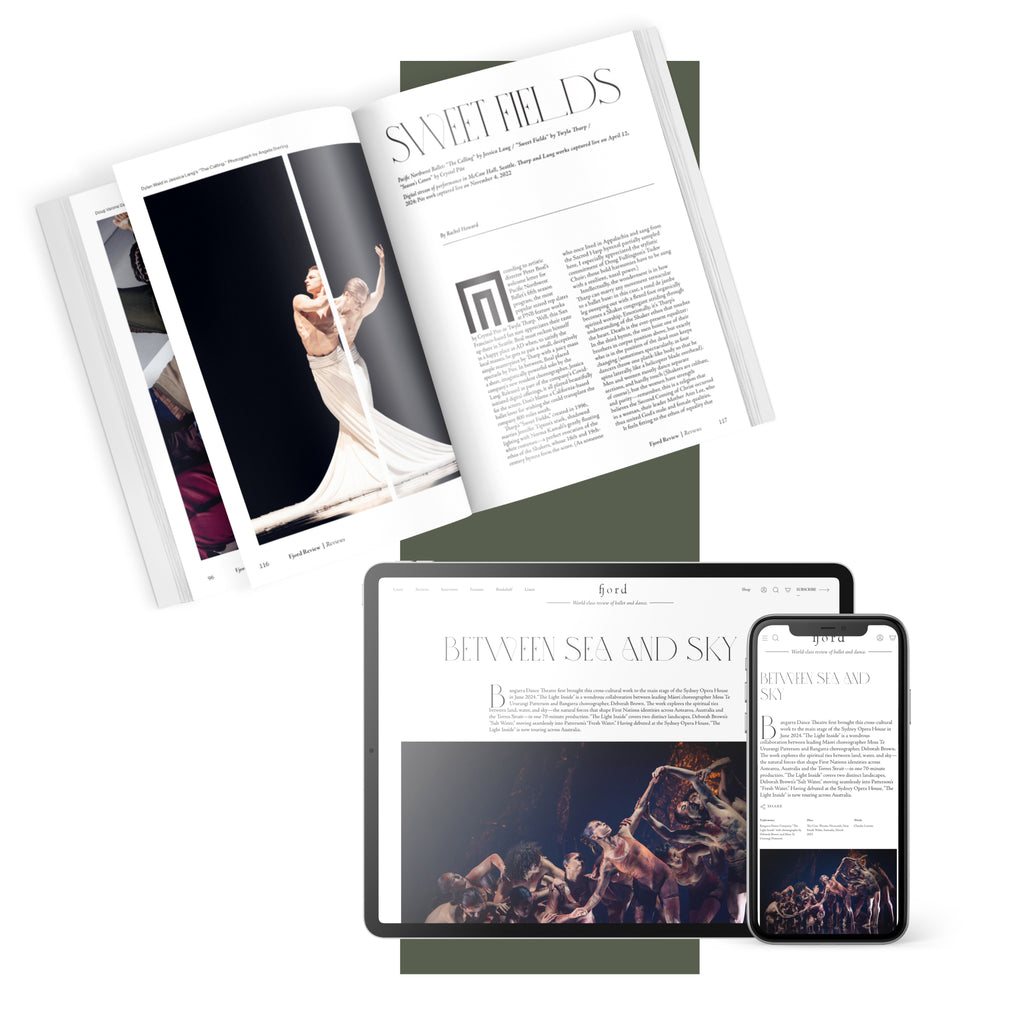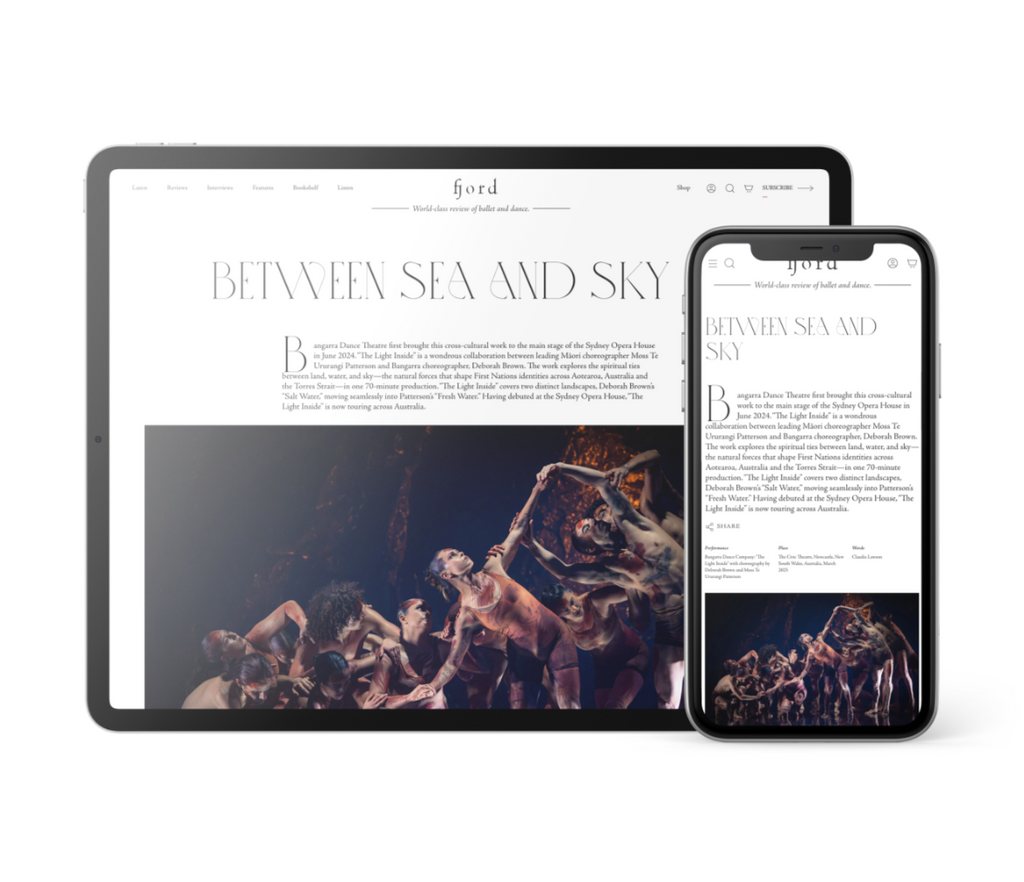When the two dancers finally stand again, there’s a terrific duet of Falcón holding vengel from beneath the armpits, slapping her arms around; somehow, it’s not violent but tender. Torres appears on a balcony shining a light that leads the two to the rock, where they squat like frogs, fleeing again to the ice, their faces nuzzling, and at last swept up by a stark beat, grooving synthesizers, and a final pilgrimage back to the dirt, where torres sits, her singing beckoning.
What does it all mean? What can we pick apart symbolically, the better to reassure ourselves we haven’t missed “the point”? I want to believe that “auiga” means exactly itself—the movement, the sound, the experience itself, with all its echoes and resonances. I’m assured here by an explanation of the title. As I began writing this review, I researched the word “auiga,” half-expecting and half-dreading that it would function as a conceptual key. Was it Spanish? Apparently not. Was it a deliberate mutation of “Auriga,” the constellation in the Northern celestial hemisphere anchored by the sixth brightest star in the sky and named for a mythological charioteer? Again, no.
Reaching out to the artists, I received an answer from the sound designer, torres. “Auiga”—pronounced ah wee gah with a hard G, torres clarified—“is a word we made up. It’s a sound like when a baby finds its first guttural vocalizations.”
The explanation could not feel more right.











comments